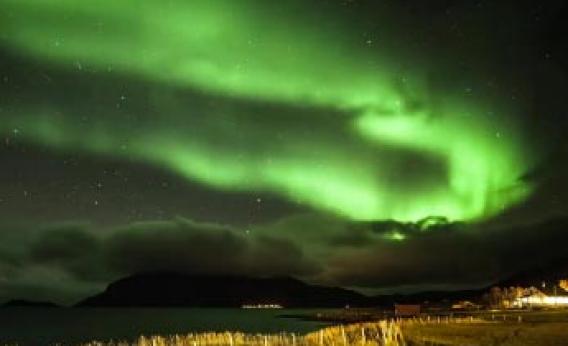Create a free profile to get unlimited access to exclusive videos, sweepstakes, and more!
Time-lapse: Spirits

Right now, the Sun is heading toward the peak of its active cycle in 2013, blasting out massive storms one after another. These storms scream across the depths of space, and if they interact with our Earthâs magnetic field, they can create ethereal, gorgeous aurorae (the northern and southern lights). It's one of the more interesting ironies of nature that such violent events on the Sun create some of the most beautiful displays on the Earth.
But they are lovely, as photographer Nicholas Buer is about to show you. From photos taken in northern Norway, he created a time-lapse video of aurorae heâs called Spirits:
[Make sure you set it to high-def and make it full screen!]
Auroae are the result of subatomic particles from the Sunâprotons and electronsâcaptured by the Earthâs magnetic field, and then channeled down into our atmosphere. At a height of about 100 kilometers (60 miles) above the ground, these particles slam into the atoms and molecules in our air, causing them to glow. The colors tell you which atom is which: green and red are from oxygen (usually, that is; sometimes nitrogen can glow red as well but itâs much weaker), while blue is nitrogen. These colors can even sometimes merge to form purple and pink aurorae! Itâs quantum mechanics, and itâs gorgeous.
The shape of the aurorae depends on how the magnetic field of the solar storm interacts with the Earthâs, too, forming ribbons, sheets, and curling waves that move across the sky. Iâve never seen an aurora as vivid as this one, but I swear someday I will!
The two things I like most about the video are the fact that itâs in high-definition, so you can make it full-screen and it still looks great, as well as the fact that Buer paid attention to the music he chose, timing the scene cuts to the beatâ¦as well as changing the mood of the video to match the audio. Part of the power of these time lapse animations is the combination of surreal motion, intrinsic beauty, and music, which together make for an amazing experience.
Iâm sure Iâll be posting more videos like this as time goes on. The Sun has been pretty active lately, and we've been seeing lots of gorgeous aurorae like these. I'll note that the immediate danger from solar storms is generally low: the Earth's atmosphere absorbs the radiation, so it can't hurt us that way. But the flood of subatomic particles from the Sun can be trouble to satellites which can short out, and to our power grid, which can get overloaded from currents induced by the magnetic impact of the particles. That's why scientists keep an eye on the Sun, so to speak, to see if it's going to cause us any grief. If they catch a storm with enough time, they can warn satellite and power grid engineers so they can prepare for it and minimize any damage.
Tip oâ the lens cap to Jenny Winder on Google+.


























